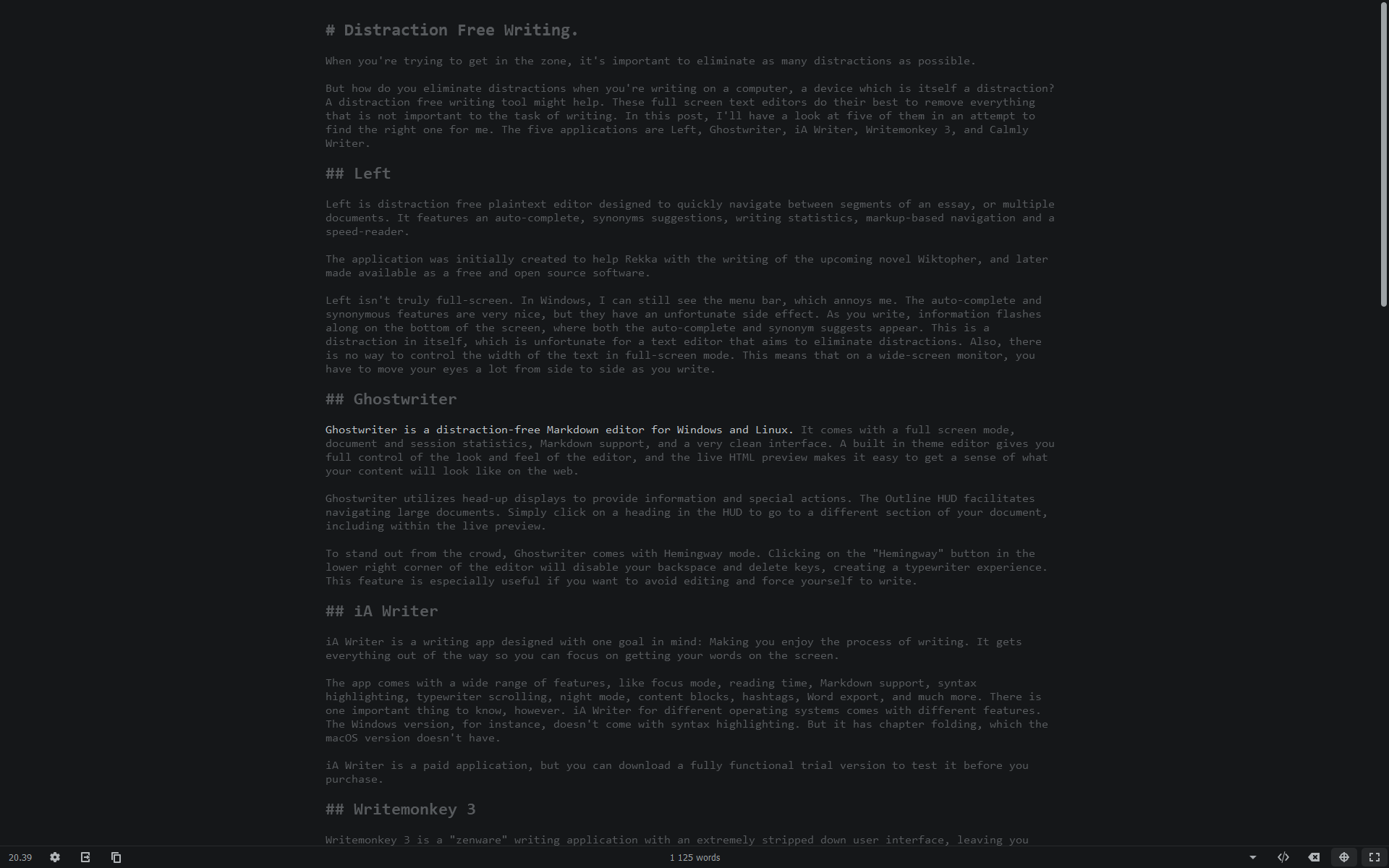

- #Free writing software that looks like a typewriter full
- #Free writing software that looks like a typewriter license
- #Free writing software that looks like a typewriter free
- #Free writing software that looks like a typewriter windows
#Free writing software that looks like a typewriter full
The coolest part about the Scrivener software is that it offers 30 days of use trial of the full version. Scrivener makes all these steps easier with simple import and export options. Afterward they transfer their drafted pieces to Google docs for proofreading or sending to WordPress. Through the app, you can upload directly to sources such as:Ī lot of writers will start a blog post by gathering their notes on Evernote. Scrivener has, by far, the most export options of any Writing App for Windows. You can even customize how much of your screen you want to cover and how blurry the background appears. The desktop app offers a pretty simple yet effective tool that enlarges your while minimizing everything in the background. If you are the type of person who finds it hard to keep focus, you will love the distraction-free ‘Full-Screen Mode’ option. It feels like having a whole bunch of post-it notes that you can drag, drop, and reorder the format as you please. Similar to Evernote, it gives an excellent visual overview.

Scrivener also offers three different ways to organize content:Ĭorkboard and Outliner help break down larger books or blog posts by headings and sub-headings. You can reopen older versions and compare them side-by-side. Using Snapshot, you can save as many versions as you want. Then it is easily accessible should you change your mind and want to revisit your past genius. With Snapshot, you can save the latest version in a folder before you delete or modify it. If you tend to rewrite different sections of your content, then the ‘Snapshot’ will be a huge help for you.
#Free writing software that looks like a typewriter windows
And they’re all available in the Windows version.Īnd of course, if you can’t find what you need, you can create your own templates and save them. Scrivener offers more than a dozen writing project templates for blog posts, novels, short stories, poetry, screenplays, and more. Writing templates can be a huge timesaver if you find yourself staring at the blank screen trying to get started. Let’s look at some of Scrivener’s features in a little more detail.

in-depth organization tools for large writing projects.The most important features of Scrivener include:
#Free writing software that looks like a typewriter license
The Scrivener desktop app offers a wide range of tools and templates, and although it costs a little more ($49 for a lifetime license after a 30-day trial), the value is clear. In fact, it’s the software that bestselling author Tim Ferris used to write several of his books. No matter if you are writing for school, a business pitch, a script, or attempting the great American novel, Scrivener has you covered. Let’s review the best five writing apps for Windows as reviewed by our team. However, some of those writing tools are exclusive to Mac, iOS (iPhone, iPad) or Android, so this review covers Windows writing software exclusively.
#Free writing software that looks like a typewriter free
We’ve already covered the complete range of best free and paid writing tools here. Our content marketing agency produces over 300+ articles/month, so we use these tools on a daily basis. Today there are a lot of paid writing tools available and a wide variety of costs. The web is full of free writing software ( Libre Office writer, Google Docs, Zoho Writer), and it’s hard to know whether you should pay for something or not. The good news is that software has come a long way in terms of helping writers. But if you’re more like everyone else, you probably want to find cost-effective ways to better writing. If you have buckets of cash, you can hire a team of proofreaders and editors.

To create a piece of writing that impacts your readers takes a lot of steps: research, outlines, drafts, edits, more drafts, proofreading, and getting feedback from editors. If you write professionally (or aspire to), you probably already know that the writing itself is only a part of the whole process.


 0 kommentar(er)
0 kommentar(er)
